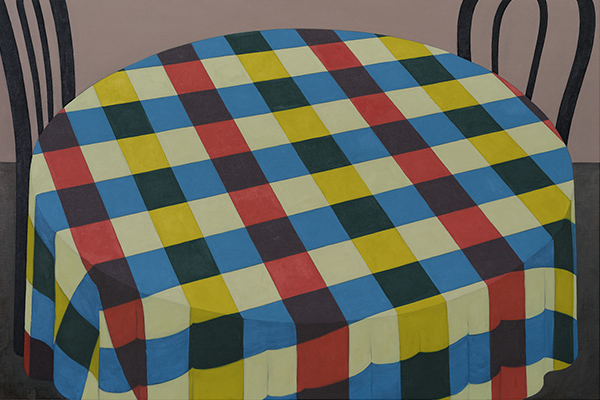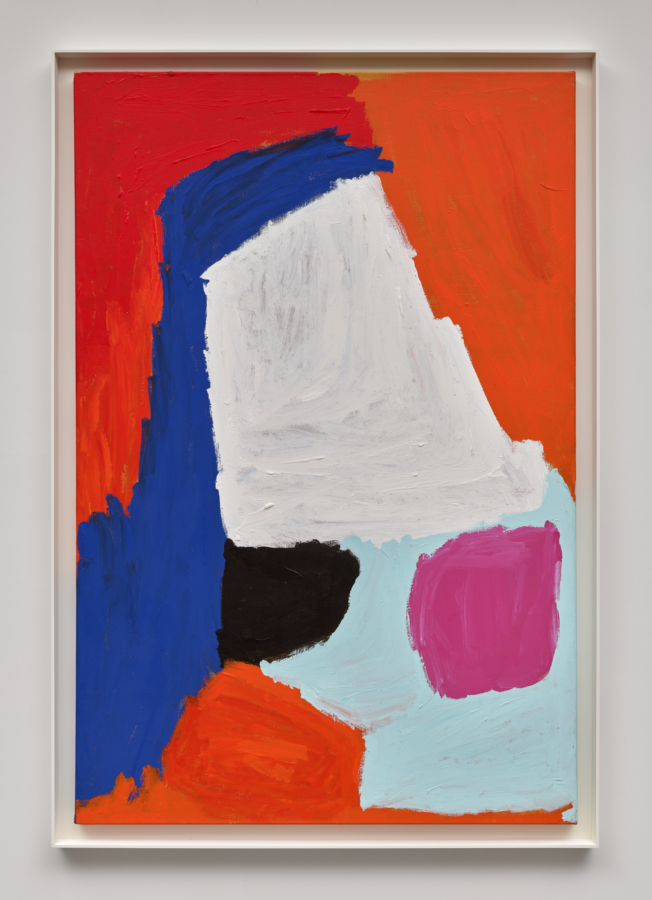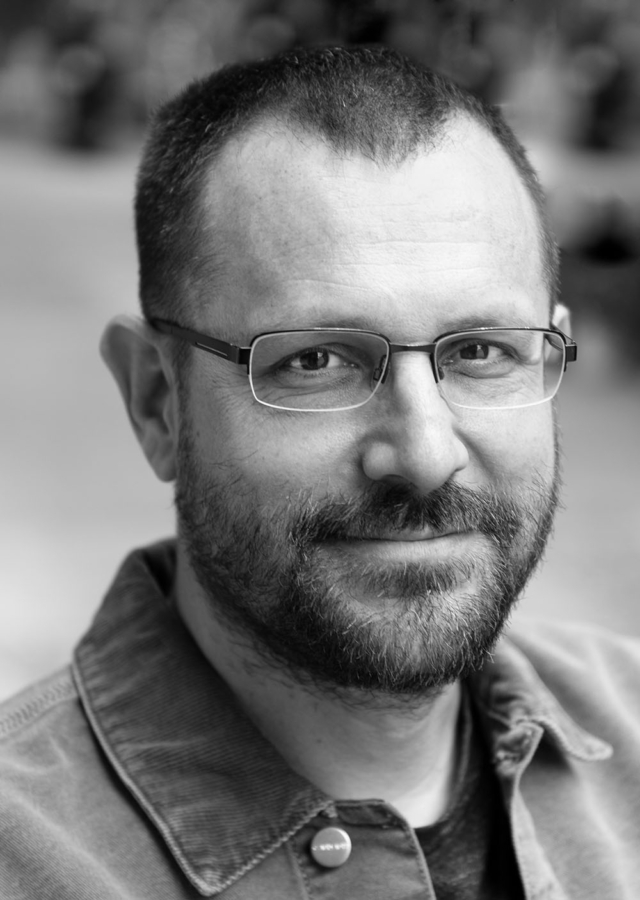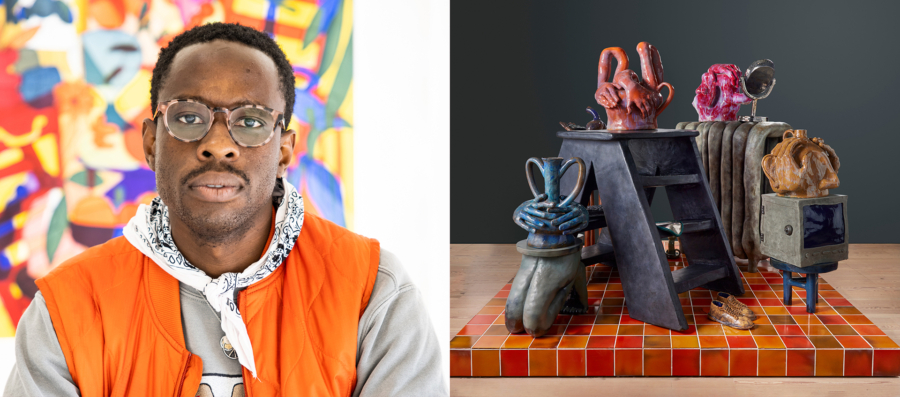February 2021
Animals Birds Flowers Moons, published by Karma, New York, 2021
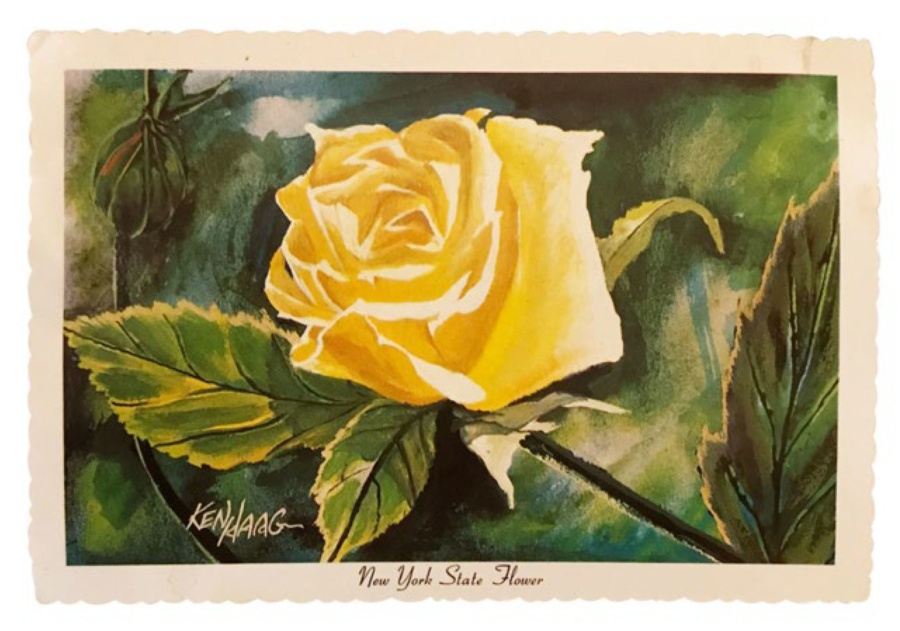
Ann Craven Hi, Lois!
Lois Dodd Hi! Where are you?
AC I’m still in Connecticut. In Guilford, Connecticut.
LD It’s just as gorgeous there as it is here, I’m sure. What a day, huh?
AC What a day! It’s sunny here.
LD Yes, it’s beautiful, sunny, and everything’s covered with snow; it’s very pretty.
AC So, are the icicles still there? I thought of you last night when I saw the icicles on the side of our house.
LD Right. I have a few hanging off of what’s an awning in the summer. But the sun also shines there, and now I’m looking at it and they’ve all fallen off. The sun got them.
AC The sun got them! The sun got mine this morning, too. When I was little, I remember lots and lots of icicles all the time on our house because my father didn’t have any gutters. So, there were icicles always around the house and we always had to be careful not to get hit by them.
LD You know, I think at 2nd Street, when I was looking out the window there sometimes in the winter, you’d see huge ones forming. My god, if those things ever fell …
AC So, you’re in Cushing, Maine?
LD I’m in Cushing, Maine, looking out the window at this winter wonderland—oh, it’s so pretty.
AC Are you going to paint today?
LD Hopefully! But I’ve got these tiny step flashings, so it’s easy to do something small.
AC You have your flashing all gessoed and ready to go?
LD Yeah, I have a pile of gessoed flashings.
AC You’re all set then, huh? That’s a perfect size.
LD And you, what are you working on?
AC I’m always torn between looking out into what I’m looking at and painting that, or the memory of that, versus the paintings that I’m doing in the studio, which are derived sometimes from mediated images.
LD Yes, yes, your memories.
AC I’m collaging my thoughts about outside—about the snow. I painted snowbirds the other day. I painted birds in the snow in 2018 for a show I did. But literally looking out and painting from observation is so important as an exercise for me.
LD You know, I can’t do anything else; there’s no way I could do what you’re doing. I have to paint from observation, otherwise I can’t make a mark. It’s very funny. I can’t invent, although I guess what you’re doing when you’re painting is inventing anyway. Without that visual key, I just can’t move. So funny.
AC That is so important to me as well, Lois. I learned how to paint by looking, by look-ing at something in the round and painting it. I’ve always struggled with the idea that I just want to paint what I’m looking at and abandon all these sort of smart-ass things I try to do with birds and stuff [laughs] … I really imagine myself just literally painting what I see. I do that lately with lots of flowers: I’ll put a vase of flowers in front of me and I’ll paint them. The moon was always my exercise of observation, it was a way for me to keep looking at something—looking at the moon, looking at the changing aspects of the moon—and painting it, because you’ve got to do it quick, as you said and we both know. It was from observation, but it became a conceptual practice because it was always changing and that allowed me to make it serial—the continuous just past.
LD Yeah. See, I’m looking out, and every so often a big clump of snow will fall off of something, some bush or tree. It’s amazing. They’re holding so much weight, the trees now with snow, but nothing looks like it’s breaking or anything. It’s just a winter wonderland.
AC Trees are strong.
LD Yes, they are.
AC They know how to bend in the winter. There’s a song—by the Carpenters, “It’s Going to Take Some Time”—that references the trees being strong: like the young trees in the wintertime, you can learn how to bend.
LD Yes, yes, and they know how to hold all that weight up. I remember one spring when apples were actually—no, wait a minute, it was apple trees, there were no apples on them. It was springtime, and then we had this tremendous snow. And I think the trees were blossoming, but the snow was on them. It was remarkable what it looked like. It had to be April, some kind of a crazy April snowstorm.
AC Wow, that really must have been gorgeous, the snow … I’ve painted snow on flowers before. Just because I had to paint—I was painting something called snowbirds, and I painted these bird paintings, and trees, and I just added snow to them. It was snowing outside two years ago, the big storm that kind of crippled the Northeast corridor right around this time in 2017. And I was painting birds, and I do have flowers with those birds sometimes, and I just put snow in the trees because I could see the snow outside on the trees.
LD Yeah, when you think of it, if you have a painting of a tree, if you went along and made a lot of white stripes on all the branches, you could make a snow painting, even in the summer.
AC Voilà!
LD Well, not in the summer because the leaves would get in the way, but …
AC Well, it’s funny, I don’t think about the snow in the winter. I mean, I don’t think about the snow in the summer, but I do paint flowers in the winter when it’s snowing, and I think about snow as an element in my painting.
LD Do you bring in cut flowers or get some flowers from the florist shop or something in the winter when you want to paint flowers?
AC I usually get them at the grocery store, nothing fancy. I also have some dried flowers that I bought a while back. No, not dried, but plastic, literally plastic flowers that look super real. I use those too when I can’t get to the grocery store. I’m going to be painting these big bouquets of flowers on a stool for my show at Karma, and those will be from observation. And I’m so looking forward to those because they’re the last paintings I’m going to do, and it’s sort of a reward to myself that I’m going to just think about what’s in front of me, what the light is giving me and what the flowers are doing. Just observation. You know, I was thinking the other day, I was talking to Peter about your work—Peter says hello, by the way—
LD Hello back to Peter!
AC [laughs] Hello Peter! And I said, you know, Lois paints from observation. And he said, “No, Lois also talks about her work in the abstract.” He said, “Lois talked to me about abstraction.” He feels your work is very abstract as well.
LD Yeah, it’s totally abstract. The process, the way you’re putting the paint down, it’s an abstract exercise even though you’re looking at something. Even though I can’t possibly be inventive enough to go totally with my own thoughts and not have some reference.
AC And your reference sometimes is a mark, or a brushstroke, or a memory of another painting.
LD Do you do that?
AC I do it all the time; it haunts me. So, in a way, that’s why I revisit paintings, to be conscious of what I was doing at that moment and why. It’s sort of like visiting an old friend.
LD Well, if I do that, I’m unconscious that I’m doing it [laughs].
AC I would think it’s not planned for you, I would think it’s very improv, you’re painting what you see and what you feel at the moment. But you do always seem to go back to subject matter that’s seemingly similar, but never the same.
LD It’s true. It’s like we’re painting the same painting all of our lives. You know? Somehow.
AC It’s interesting, it’s like we’re painting the same painting, one long painting.
LD Right. I’m looking out the window—it’s just blue, there’s not a cloud anywhere, so it’s just blue and white and a kind of warm, brownish, blackish gray for everything else except the evergreens, which are kind of blackish green. A great color. The back of my barn got newly shingled, and it’s light. The new shingles look very—they’re just raw. They look very yellow with the sun on them right now.
AC The sun shining right on them, coming from the river?
LD Yeah. The back of the barn is facing due south, I guess.
AC So, I’m looking over at a bunch of reeds. I’m looking at a wide-open space here in Connecticut where the back of the house faces a bird sanctuary. It’s a—what do you call it? A marsh.
LD Oh, it’s a marsh?
AC Yes, the back of the house faces a marsh.
LD That’s beautiful! Wow.
AC I see lots of birds. Yesterday you said there’s no birds up in Maine right now—
LD No, not a bird, I haven’t seen a bird.
AC There’s tons of them here, there’s all sorts. I saw a cardinal yesterday. I saw the cardinal against the snow, it was so beautiful. Right now, I see blue sky with clouds, and I see the water is a gray blue. And the trees are all there, and those are a raw umber with white. Then the reeds that are closer to the house are more like a burnt umber with a little orange in them, they’re warmer. There’s a lot of warm and cool going on here. I love the trees, they’re so bare.
LD There are the birds there, right, you’re getting birds there? I remember visiting friends in Pennsylvania, but maybe they’d put out bird food. My friend Jeff who puts out birdfeed, he’s probably got birds at his house, but there’s no birds around here.
AC That’s so interesting. You know, there’s birds here because we’re on a marsh. I saw a blue heron yesterday, and I saw an eagle the other day, and I see little Connecticut warblers. I do have a birdfeeder, wherelack I ridiculously feed them every day, and I even give them blueberries [laughs].
LD They come around, yeah [laughs].
AC When I’m in Cushing, though, even at the end of the fall, the birds tend to go away. There’s crows—there are a lot of crows—but that’s about it.
LD Do you stay in Connecticut every year or not all? Guilford, it’s on the coast, right?
AC It’s on the coast, yeah, it’s on the Long Island Sound. It’s famous for a few things. Frederick Law Olmsted lived here; he had a farm here a long time ago. There’s also the painter—she used to run Orchard Gallery—Rebecca Quaytman. She lives here. She’s from Guilford, and her mother, Susan Howe, is also here with her—Susan the poet. She lives here, she gave up New York, so she’s brave.
LD Yeah. I’m looking out, and I’ve got little skinny icicles hanging off of what’s the edge of the summer awning out in the back of the house. It’s up against the house, but there’s just a strip of cloth that’s got all these icicles hanging off it.
AC It must be glorious; those icicles are glorious.
LD It’s absolutely black and white—it’s kind of wonderful, there’s no colors, just the black-and-white mirage out there. It’s great. It’s like … I don’t know what it’s like … an etching or something.
AC That’s really profound: “It’s like an etching.” Just no color.
LD Never painted any birds, no. Not even little blobs just floating through the sky or any-thing. I never think about the birds. Not that I can think of, anyway. Nope. My paintings are a birdless universe. So, you’ll have to do the birds [laughs].
AC You’re lucky. It’s addictive. LD On a winter day, on a snowy winter day …
LD It’s beginning to get dark here; is it where you are?
AC Yeah, that’s why I called you. It’s so interesting; I wanted to know how dark it was there right now because—
LD It isn’t dark yet, but it’s definitely beginning to fade as it tends toward five o’clock. It was getting dark at four thirty—the days are getting longer.
AC The days are getting longer, yes. We’re headed toward spring. I’m looking out the window right now onto a marsh, a big marsh. It’s just starting to get dark—like you said, it’s a little hazy. It’s getting gray out. There’s no birds at the birdfeeder, and it’s quiet. I can see there’s no wind. The sunsets here are incredible, but it’s a gray day and there’s no sunset tonight. And there’s no moon. Thursday is the new moon.
LD I’ll see you tomorrow morning!
AC See you tomorrow! Thank you, dear Lois, thank you.
LD OK, night night.
AC Night night.
